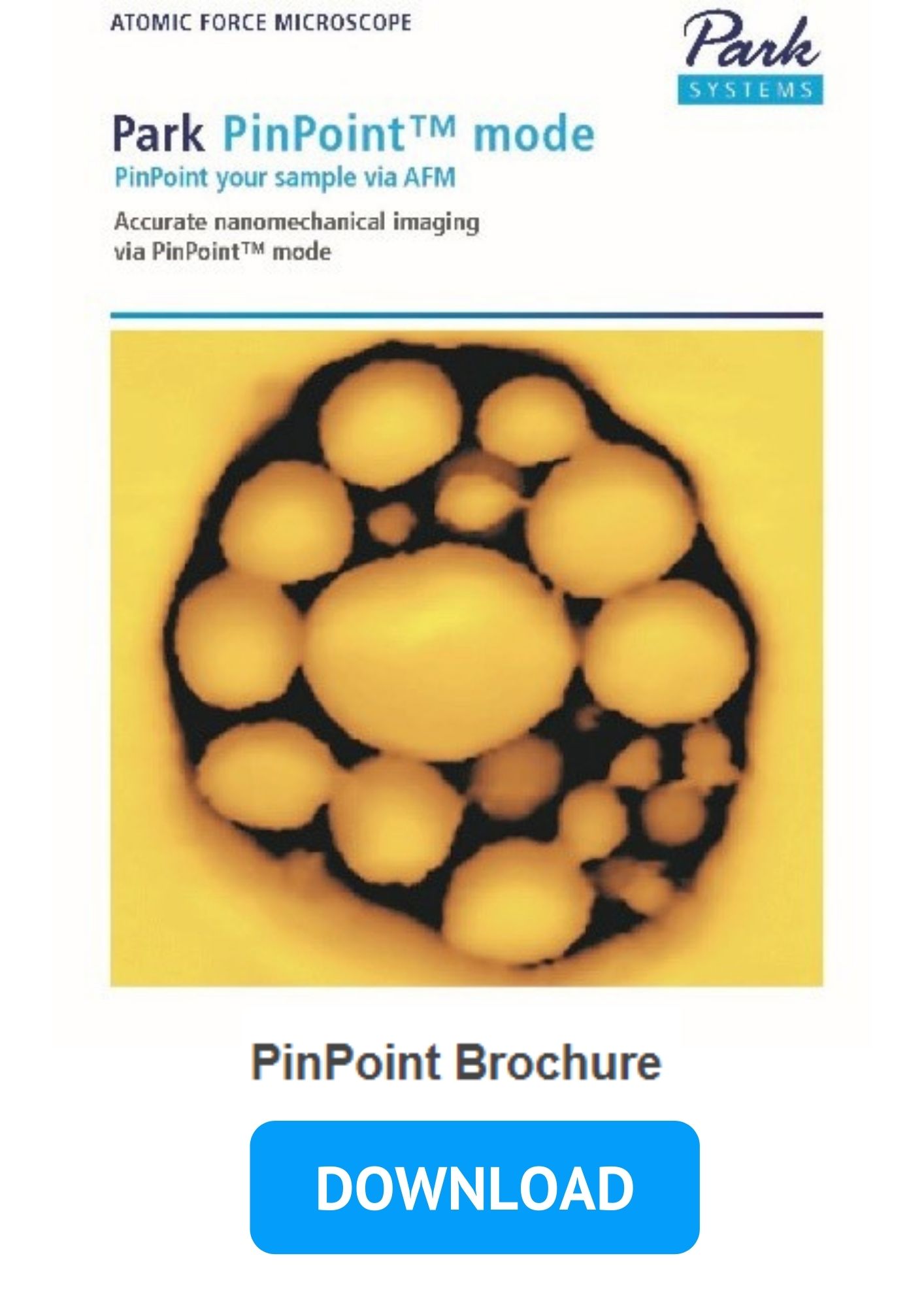
4 March, 2021
Piezoresponsive polymers for electronic and sensor applications: a glance at a nanoscale (via Pinpoint PFM)

With the integration of piezoelectric polymers in sensors and electronic devices, such as transducers, an accurate structural and electromechanical characterization down to the nanoscale becomes vital. As real-space, high resolution imaging technique, atomic force microscopy (AFM) accesses not only morphological sample information, but also resolves functional properties including nanomechanics, piezo-/ferroelectricity and electrical potential. Therefore, AFM is ideally suited for a holistic investigation of functional polymer samples with a nanometer resolution. Here, we demonstrate the capabilities of Park Systems’ research AFMs to image the piezoelectric and nanomechanical properties of PVDF fibers simultaneously via PinPoint piezoelectric force microscopy (PFM). Read more here.

18 March, 2021
Nanoscale exploration of doping patterns in electronic devices (via PinPoint SCM)

With the downscaling of electronic devices to the nanoscale, an accurate, high-resolution characterization of structural and electronic properties becomes increasingly important. Atomic Force Microscopy (AFM) offers real space imaging with a nanometer resolution, and not only measures the topographic features, but can simultaneously detect nanomechanical and electrical properties. In this webinar, we will explore the capabilities of SCM for electronic device applications. We will show the additional options that can be added to traditional SCM using our SmartScan(TM) software for improving measurement results and repeatability. In particular, we will show PinPoint(TM) measuring mode in combination with SCM. Read more here.

8 April, 2021
Accurate nanoelectronic investigations of functional materials for optoelectronics application (via PinPoint C-AFM)

Successful integration of semiconductor thin films in high-performance optoelectronic devices requires homogeneous electric properties across the whole film. Particularly polycrystalline layers can feature local differences in their conductivity due to morphological features such as grain boundaries or defects. Here, we demonstrate Park Systems’ PinPoint C-AFM mode enabling stable, high-resolution current imaging on optically active semiconductors. This force-spectroscopy-based approach eliminates damaging shear forces between tip and surface and thus increases reproducibility for consecutive images. Read more here.

22 April, 2021
PinPointing peptides: Unveiling molecular structure and nanomechanical properties of peptide nanotubes

The self-assembly of short peptides has been recently established as a facile route to various macromolecular nanostructures with promising applications in tissue engineering, biomedical devices and drug delivery. Some of these nanostructures may also be used as degradable scaffolds for the fabrication of metal nanowires. Self-assembled peptides can form an array of nanostructures including nanofibrils, nanotubes, nanospheres and vesicles dependent on the constituent peptide or environmental conditions during assembly. At the same time, unveiling their molecular structure and mechanism of peptide self-assembly is crucial in understanding the precise molecular routes for medical conditions associated with protein misfolding, e.g. Alzheimer disease.
Therefore, peptide nanotubes and similar structures are ideal objects for correlative AFM imaging – an approach to combine both molecular resolution and nanomechanical/nanoelectrical data within the same experiment. Read more here.

 Current challenges in semiconductor, energy conversion and soft matter research require a nanoscale view into functional material properties and morphology best realized with atomic force microscopy (AFM). With this webinar series, we want to support you in achieving breakthrough AFM data for your material research with high precision and accuracy. From energy conversion, via nano-electronics and flexible electronics, to soft matter studies, we will address recent challenges of material investigations in nanoscience.
Current challenges in semiconductor, energy conversion and soft matter research require a nanoscale view into functional material properties and morphology best realized with atomic force microscopy (AFM). With this webinar series, we want to support you in achieving breakthrough AFM data for your material research with high precision and accuracy. From energy conversion, via nano-electronics and flexible electronics, to soft matter studies, we will address recent challenges of material investigations in nanoscience.



